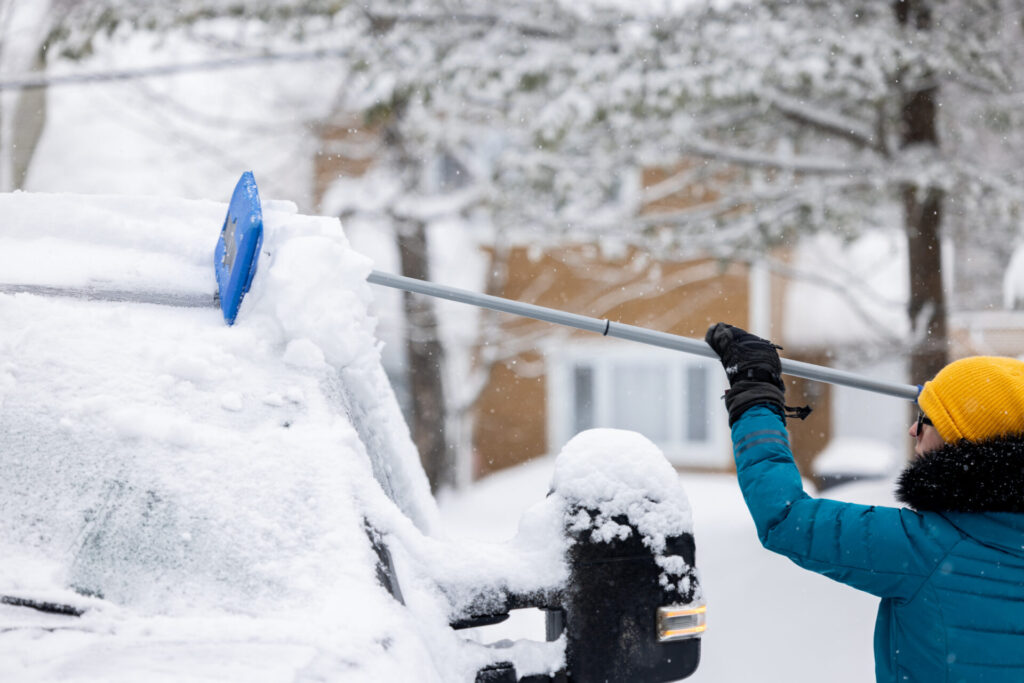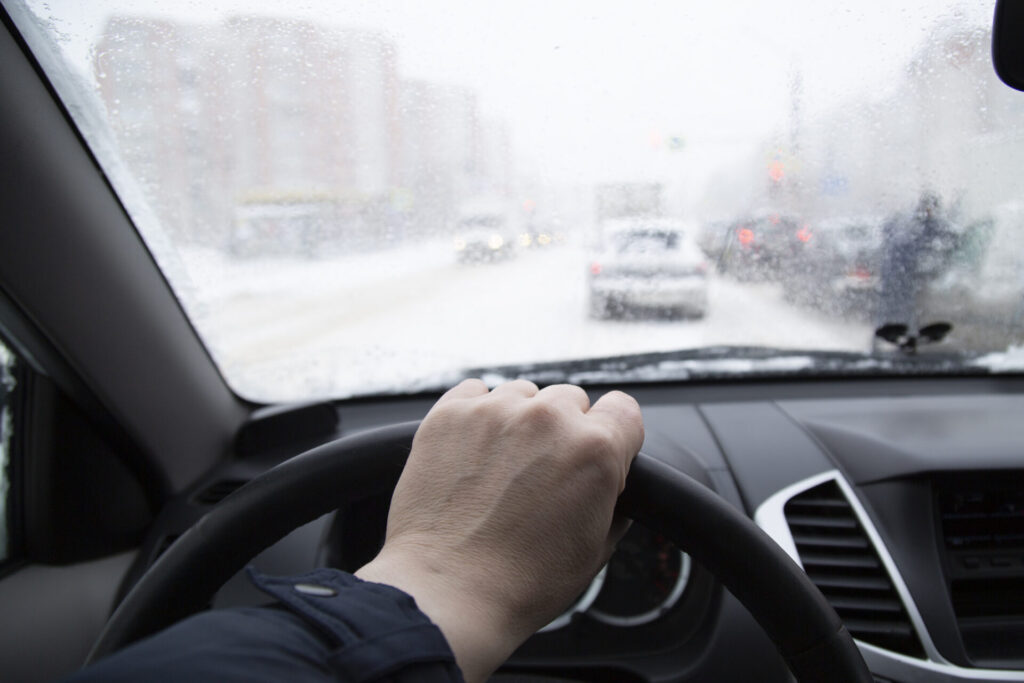Winter in Ontario can be beautiful but between heavy snowfalls, freezing rain and slush, our weather can create some pretty hazardous driving conditions.
Preparing to drive in the winter means more than having snow tires and leaving an extra distance between you and the car in front of you – although those are two very critical strategies to use. Being well-informed about weather and road conditions and best practices for winter driving can also help you prepare to hit the roads safely this winter.
With some preparation and following these tips, you can help stay safe on the road this winter.
Before you leave
Be prepared for anything
Ensure your safety by preparing your car. Make sure you have winter tires to help your traction in slippery conditions. Have an ice scraper and snow brush ready to clear off your vehicle thoroughly before you leave. It is also a good idea to keep your gas tank at least half full throughout the winter and check your fluid levels, brakes and battery before cold weather arrives.
Keeping an emergency kit in your car can help keep you safe. Pack a blanket, hats, gloves and an extra sweater or jacket to keep you warm. You’ll also want a first aid kit, a small shovel, a flashlight, and booster cables. And make sure your phone is fully charged, and bring an extra battery bank and cable, just in case.
Check the weather
Ontario’s winter weather can change quickly. Just because it’s sunny when you’re leaving does not mean the visibility or conditions won’t change. Check the forecast before heading out and be prepared to slow down during storms or heavy snowfall. Remember that winter weather can be quite regional, so what is happening in Ottawa may change dramatically by the time you are on the TransCanada.
Pay attention to road closures and give yourself plenty of extra time when driving in snowy and slippery conditions. Always listen to local authorities and obey road closures and advisories.
Clean your car completely

Clearing your car of ice and snow, including your lights and license plates, ensures that you can see properly and that other drivers can see you. Clear the snow from the top of your car to ensure no snow or ice will fly off while driving. It’s not just a good idea – in Ontario, it’s the law and failure to properly clear your vehicle can lead to traffic fines. Remember to clear foggy windshields and windows from the inside. Your car’s air conditioner acts as a dehumidifier and turning it on will clear foggy windows for better visibility.
On the road
Adjust your driving habits
Leave extra space between you in the cars in front of you to to break suddenly. Remember that speed limit signs are posted for ideal conditions, so slow down when roads are slippery or covered in snow. Avoid using cruise control as it can cause loss of traction on icy roads. When breaking, apply steady and gentle pressure to avoid skidding. Always use your headlights to increase visibility for yourself and other drivers.
Snowplows

One of the biggest hazards during winter driving is snowplows, or rather driving when they’re doing their job. These large vehicles are essential for keeping roads clear and safe, but they can pose a danger if not approached with caution. Never pass a snowplow, as a wing plow may be attached to extend into the adjacent lane. Always stay at least 15 meters behind a snow removal vehicle, giving them plenty of space to maneuver.
Driving at night
Use even more caution when driving at night or in bad weather conditions. Ensure your headlights are correctly adjusted and use low beams in heavy snowfall to reduce glare. Black ice can be difficult to see but can cause vehicles to lose control. Pay attention to how your car reacts to the road and any sliding you may experience. If visibility becomes too poor, pull over in a safe location and wait for conditions to improve.
Have your CAA Membership handy
Having a CAA Membership can help you out in case of an emergency on the road this winter. Whether you have a flat tire, need towing or have a flat tire, you can count on CAA to be on your side this winter. With the CAA Mobile App, your Membership is right in your pocket for when you need it. Plus, you can request roadside assistance from the app, and track your driver to your location.
Not a CAA Member? Visit GetCAA.ca to choose a Membership level right for you.


